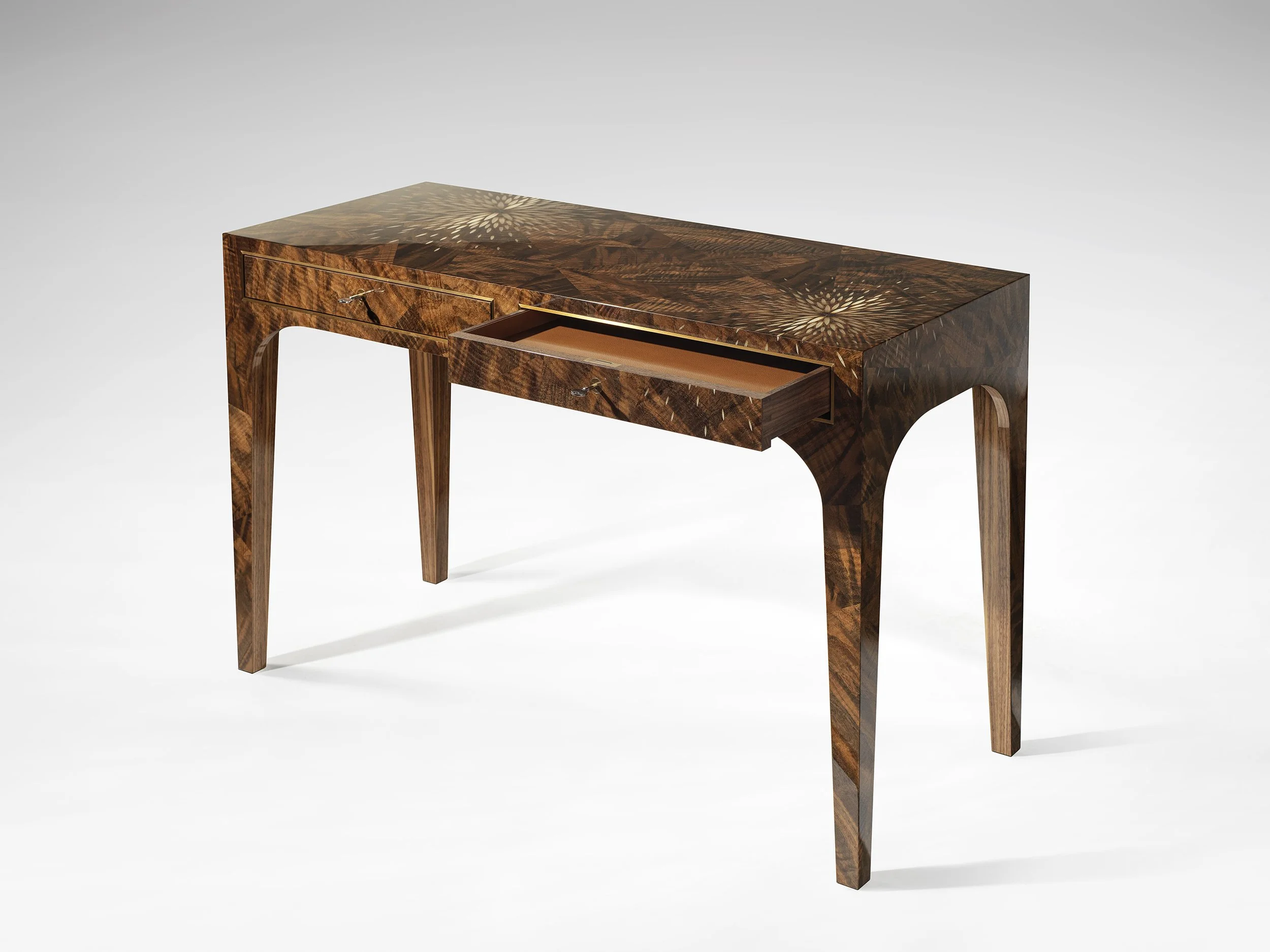The Key to Craftsmanship
Written by Laetitia Contat Desfontaines
A few days ago, I visited the Cartier, Design: A Living Legacy exhibition at the V&A in London. Among the many exquisite pieces on display, one small object caught my attention: a delicate vanity case, complete with a miniature key. It was striking not for its size or function, but for the level of care embedded in every surface. From the fine enamelwork to the hinge mechanism, every detail was deliberate. Nothing was overlooked.
It reminded me why details matter, not just in jewellery or horology but in everything we create. And more specifically, it brought to mind a piece we recently completed at Silverlining: the Firework Desk.
The desk was commissioned by a client who fell in love with one of our sample patterns, a firework motif expressed through intricate marquetry using precious timbers. They asked us to develop a simple desk console incorporating this technique. While the silhouette of the piece remained intentionally understated, the focus was placed entirely on surface and finish, on the precision of the pattern, the alignment of veneers, and the subtle shimmer of each inlaid element.
But what truly captured the spirit of the project was something hidden: the key.
Rather than using a standard mechanism, we created a bespoke key to match the desk’s firework motif. The key itself carries the same radial burst design, this time engraved in metal, echoing the movement of the timber pattern above it. It is an object most people will never see. And yet, for us and for the client, it mattered.
This small detail, like the vanity case at Cartier, speaks to something we care deeply about at Silverlining: the belief that craftsmanship is not only about what meets the eye. It is about what lies beneath, behind, inside. It is the unseen corners, the carefully engineered joinery, the weight and feel of a drawer pull, the touch of a lock. And yes, the design of a key.
In a world increasingly driven by surface impressions, it is easy to underestimate the value of what is hidden. But for those who notice, or for those who know, it is precisely these details that elevate a piece from functional to meaningful.
Seeing that tiny key in the museum vitrine of the Cartier exhibition reminded me of why we do what we do. It reminded me that excellence is a habit, one that lives in every decision, no matter how small.
And sometimes, the smallest part of a piece is the one that tells the story best…
Subscribe to our newsletter
Sign-up to receive our newsletter and discover our stories, collections and latest innovations.






